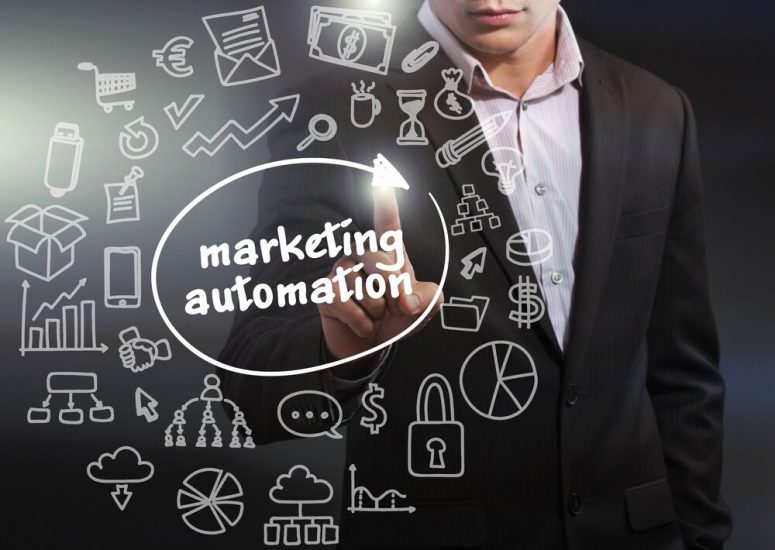
Is artificial intelligence a threat to the value of creativity, waiting in the wings to steal jobs and turn the marketing industry into a Matrix-style dystopia?
Elon Musk is a leading voice on the subject of robots replacing many of the tasks humans do today. He suggests we’ll need a global fund to maintain demand for the services that machines will shortly be peddling. Sound bleak? Perhaps. Yet history is littered with samples of technologies rapidly advancing — look at what’s happened in the utilities and transport sectors.
Despite that some AI-generated art, music, and poetry is already indistinguishable from man-made work, numerous studies by McKinsey & Co. indicate that people still understand their fellow consumers better than any machine can at this point. Marketers remain integral to solving complex problems that consider a range of variables, from a client’s budget to a buyer’s emotional drives. Instead of replacing them, AI can be used to enhance the value of creativity.
The biggest challenge is identifying the right balance between automation and human workers, ultimately fostering a culture of collaboration — not of fear.
Value of Creativity: When Being Human Isn’t Enough
Machine learning is a powerful tool that can augment marketing efforts and give teams a competitive edge. Several companies are already leveraging this technology to boost marketing efforts across organizations and sectors.
New York City-based Picasso Labs has created software that utilizes predictive evaluation — a form of AI that helps marketers determine what people want to see, what inspires engagement, and what delivers results — to help marketers choose images for social media campaigns. By cataloguing every photo and video a company posts online and tagging the visual elements it recognizes, such as a model’s gender, ethnicity, and facial expression, the software reports which elements are likely to increase engagement based on past performance. Another example is ScriptBook, a company that uses AI to decide which screenplays will become Hollywood blockbusters by teasing out a film’s genre, which gender or genders it will likely appeal to, and even the likability of its protagonist.
Creatives who perform repetitive executional tasks, like creating banner copy or subject lines that can be optimized by machines, may need to worry about the future. However, ideation and creative solutions, though bolstered by machines, require a mature and human creative mind. Take key campaign concepts, for instance: If marketers program a machine to generate associations between two concepts related to driving (e.g., “car” and “safety”), then the data gleaned from that learning can help marketers judge, shape, and turn those words into a creative solution for a business problem. The technology itself wouldn’t directly replace the marketer or creative working on the project.
Value of Creativity: Melding the Man and the Machine
Armed with the right data and strategies for navigating this new era of automation, creatives can let AI do some of the heavy lifting and instead focus on what their teams do best — be creative. To keep precision and empathy at the forefront of their work, marketers can allow AI to supplement them in the following ways:
- Accelerate the workforce reskilling. Embrace the possibilities by training with new formats to learn how to use AI and machine learning. Understand that your and your team’s roles are essential — no one is being replaced. As creatives, it’s up to you to curate the information provided by the machines, because you’ll use your intuition and empathy to figure out what works.
- Analyze automation by the outcomes, not by the hype. Sometimes we get lost and become fascinated by the process instead of paying attention to the outcome. A bad idea generated by automation is still a bad idea, regardless of how you frame it. Ultimately, marketing is about people, and people still understand people better than machines do — at least for the moment. Though machines can be trained with the necessary parameters to be useful, creativity is still the most important part of the game.
- Don’t lose focus on what is most important: the individual. Automation can help us learn more about individuals and can even foster creative solutions to better connect with consumers in the moments that really matter. Most buying decisions are rooted in emotion, so if you always start and end on the individual, then automation becomes a way to increase your efficiency in finding the best solutions, even though it isn’t a solution in itself.
Human creativity combined with machine learning can be a big boon for marketing in tomorrow’s world, truly increasing the value of creativity. By foregrounding education, ignoring the hype to hone the outcomes, and focusing on the individual, marketers can harness the power of AI without worrying about the relevance of their roles. Because when people and machines work together, the results can be overwhelming.
P.S.: A whole paragraph of this article was written by Articoolo, a beta content writer bot. Can you guess which one? Check out the first paragraph of this Bizagi blog post to see whether you’re right.
The original version of this post was first published on The Marketing Scope.
Moa Netto, CCO at RAPP NY, is an award-winning creative with over 150 awards to his name. In 2017, he was elected the best digital professional in Brazil, according to the Brazilian Advertising Association. His background is in digital and direct advertising, but he also spent eight years working in traditional agencies. He has served as a jury member at some of the most important advertising festivals in the world, including Cannes Lions (2017 and 2013), D&AD (2017), London Festival, and Webby Awards, among others.

